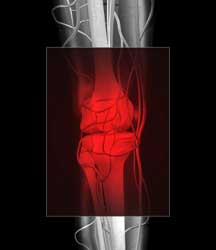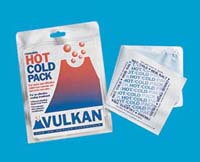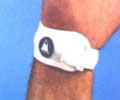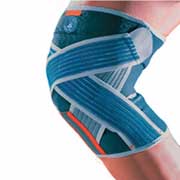Patella Fracture & Football
May 20 2008 | Articles

Patella Fracture Explained
A Patella fracture or a broken knee cap typically results from a powerful blow delivered directly to the knee. Such an injury can occur from a powerful football tackle or high tackle.
The damage involved in a Patella Fracture may range from a single crack across the knee cap to a stellate fracture, a condition in which the knee cap is cracked into several pieces.
Sometimes, even a forceful contraction of the Quadriceps would be sufficient to fracture the patella. In this instance, the knee cap will suffer a horizontal crack across its surface, resulting in the patient’s inability to straighten the knee.
Patella Fracture Signs & Symptoms
Severe pain is instantly felt on the knee area. The condition will also cause the knee to immediately swell, which in turn will make it unlikely for the footballer to bend the injured knee. If the Patella fracture caused a crack across the knee cap, the player may feel a gap in the knee.
Patella Fracture Treatment
What you can do
Once a patient is suspected of this injury, he must be immediately transferred to the emergency department. An x-ray will confirm if there is indeed a fracture.
Once the condition is definitively diagnosed as a fracture, treatment must immediately follow. The course of the treatment will be determined by the appearance of the fracture fragments since the intention of the orthopaedic consultant is to restore the knee cap to its original state.
If the fracture results in only a small crack that does not dislocate the knee in anyway, the consultant typically decides to immobilise the knee joint using a plaster cast. The cast will stay in place for six weeks.
If the knee received a more powerful blow, the resulting injury may involve the dislocation of the fragments in the knee cap. In order to repair such damage, it will be necessary to have an operation. In this operation, the consultant can place tensioned wires that will aid in restoring the knee cap to its original form.
However, the injury may be so tremendous that normal alignment will no longer be possible. Extreme cases like this may require the complete removal of the knee cap. This procedure will protect the patient from the development of osteoarthritis in the Patello – Femoral joint. Upon removal of the knee cap, the patient’s leg will be kept in a plaster for up to six weeks.
The procedures for rehabilitation may differ since they are largely determined by the technique employed by the orthopaedic consultant. Some consultants permit their patients to use a knee brace after only 2 – 3 weeks of staying in a plaster. The use of the knee brace will allow the physiotherapist to start helping the patients regain normal range of movement, as well as develop strength.
The primary aim of Physiotherapy treatment is to lessen the pain caused by the inflammation of the knee. The treatment involves the application of ice packs to the knee every couple of hours, for 20 minutes each time. However, the patient must be careful since the ice packs can cause ice burns when placed directly on the skin. When used properly, the ice packs will help alleviate the pain as well as reduce bleeding within the tissue.

View Reusable ice pack
Provided that there is no more pain, the patient may begin using the static cycle after around six weeks. From the 6th – 12th week, the patient may have regained the range of movement so the intensity of the activity may be increased. This process must be monitored by a chartered physiotherapist. Full movement may also be restored through the aid of pool running as well as water exercises that involve a buoyancy belt.
In order to prevent the start of Patello – femoral arthritis, it is important for the patients to be engaged in long-term maintenance of the strength in their Quadriceps. However, in the case of a Patella Fracture, knee pain may continue to persist even after the injury has been healed. To help manage their symptoms of knee pain, many prefer the use of a knee brace or support since these materials provide warmth to the knee.
Running in a swimming pool, using a buoyancy aid, is an ideal method of maintaining fitness while the ligaments and bone are healing.

Click here to view buoyancy jackets for water therapy
Patella Fracture Prevention
For people whose activities put them in high risk of falling on their knees, it may be helpful to cover their knees with protective padding.
Football Rescue Recommends Knee Supports
![]()
![]()
![]()
![]()
![]() 5 Star Rating
5 Star Rating

Excellent medial and lateral support ideal for footballers. Multi-tiered, plush-lined elastic body with wraparound design.

Vulkan Patella Strap

The Knee sport strap is designed to simulate knee joint strapping techniques used to support the collateral knee ligaments and restrict joint rotation but still enable running
